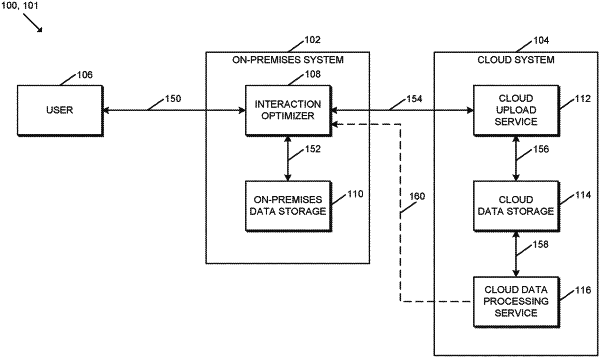| CPC H04M 3/5175 (2013.01) [H04M 3/5183 (2013.01); H04L 67/10 (2013.01)] | 20 Claims |

|
1. An on-premises system for pre-processing data for forecasting, the on-premises system comprising:
a data storage having stored thereon contact center interaction data in a source data structure;
at least one processor; and
at least one memory having a plurality of instructions stored thereon that, in response to execution by the at least one processor, causes the on-premises system to:
determine a corresponding first number of interactions per unit of time for a corresponding source interval of the contact center interaction data for each source interval represented in at least a portion of the source data structure;
determine a corresponding second number of units of time in a corresponding destination interval represented in an output data structure of a computing system;
determine a corresponding third number of interactions in the corresponding destination interval based on the corresponding first number of interactions per unit of time for the corresponding source interval and the corresponding second number of units of time in the corresponding destination interval for each source interval represented in the at least the portion of the source data structure; and
immediately store to the output data structure of the computing system, for each corresponding destination interval and without use of a third data structure intermediate to the source data structure and the output data structure, data representative of the corresponding third number of interactions determined for the corresponding destination interval.
|